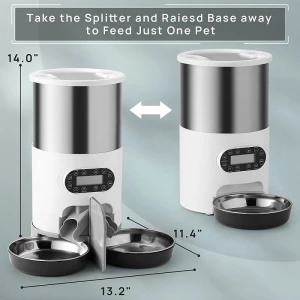Digital Video Recorder: The Ultimate Guide for Security Solutions in 2025
In today's fast-paced world, security is a top priority for homes and businesses alike. A Digital Video Recorder (DVR) is an essential tool for monitoring and recording surveillance footage. Whether you're looking to enhance your home security or safeguard your business, understanding the latest DVR technology is crucial. This guide covers everything from types and features to buying tips and reliable suppliers.
How to Find Reliable Digital Video Recorder from China in 2025
China is a leading manufacturer of Digital Video Recorders, offering a wide range of options at competitive prices. To find a reliable supplier, consider the following:
- Certifications: Look for suppliers with ISO, CE, or FCC certifications to ensure quality and compliance.
- Customer Reviews: Check feedback from previous buyers to gauge reliability and product performance.
- Sample Testing: Request samples to test the DVR's functionality before placing a bulk order.
- After-Sales Support: Ensure the supplier offers warranty and technical support.
What Buyers Should Know Before Buying Digital Video Recorder from China
Purchasing a Digital Video Recorder from China can be cost-effective, but buyers should be aware of potential challenges:
- Shipping Costs: Factor in shipping and import duties when calculating the total cost.
- Language Barriers: Ensure clear communication with suppliers to avoid misunderstandings.
- Compatibility: Verify that the DVR is compatible with your existing security system.
- Lead Times: Account for production and shipping delays, especially during peak seasons.
Types of Digital Video Recorder
There are several types of DVRs available, each suited for different needs:
- Standalone DVRs: Ideal for small-scale surveillance with limited channels.
- Hybrid DVRs: Support both analog and IP cameras, offering flexibility.
- Network DVRs (NVRs): Designed for IP cameras, providing high-definition recording.
- PC-Based DVRs: Use a computer as the recording device, suitable for large-scale systems.
Functions and Features of Digital Video Recorder
Modern DVRs come with advanced features to enhance security:
- High-Resolution Recording: Capture clear footage with 1080p or 4K resolution.
- Remote Access: Monitor live feeds from anywhere via smartphone or computer.
- Motion Detection: Receive alerts when movement is detected in the camera's field of view.
- Storage Options: Expandable storage with HDD or cloud backup for extended recording.
Scenarios of Digital Video Recorder
DVRs are versatile and can be used in various settings:
- Home Security: Monitor entrances, driveways, and indoor spaces.
- Retail Stores: Prevent theft and monitor customer behavior.
- Offices: Ensure employee safety and secure sensitive areas.
- Industrial Sites: Oversee large premises and machinery.
How to Choose Digital Video Recorder
Selecting the right DVR depends on your specific needs:
- Number of Channels: Choose based on the number of cameras you plan to connect.
- Resolution: Higher resolution provides clearer footage but requires more storage.
- Storage Capacity: Opt for expandable storage if long-term recording is needed.
- Budget: Balance cost with features to get the best value for your money.
Digital Video Recorder Q & A
Q: What is the difference between a DVR and an NVR?
A: A DVR records analog camera footage, while an NVR records digital IP camera footage. NVRs generally offer higher resolution and flexibility.
Q: Can I access my DVR remotely?
A: Yes, most modern DVRs support remote access via apps or web browsers.
Q: How much storage do I need for my DVR?
A: It depends on the resolution and number of cameras. A 1TB HDD can store about 30 days of footage from a 1080p camera.
Q: Are DVRs weatherproof?
A: DVRs are typically installed indoors, but outdoor cameras connected to them should be weatherproof.
Q: Can I integrate my DVR with other security systems?
A: Many DVRs support integration with alarms, motion sensors, and smart home systems.




























